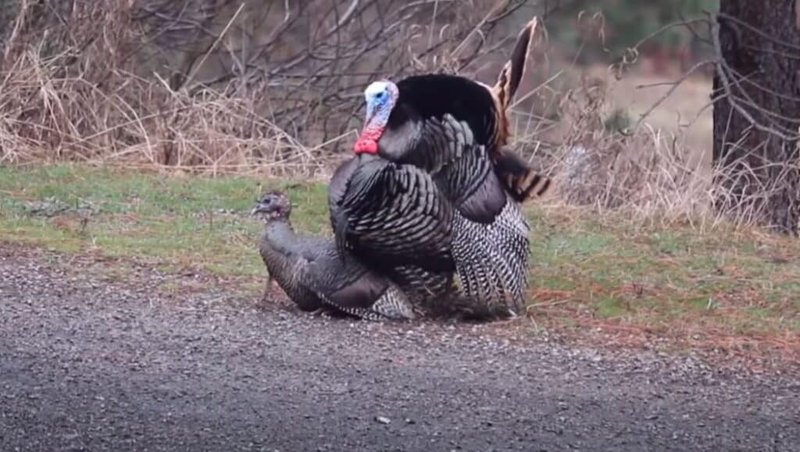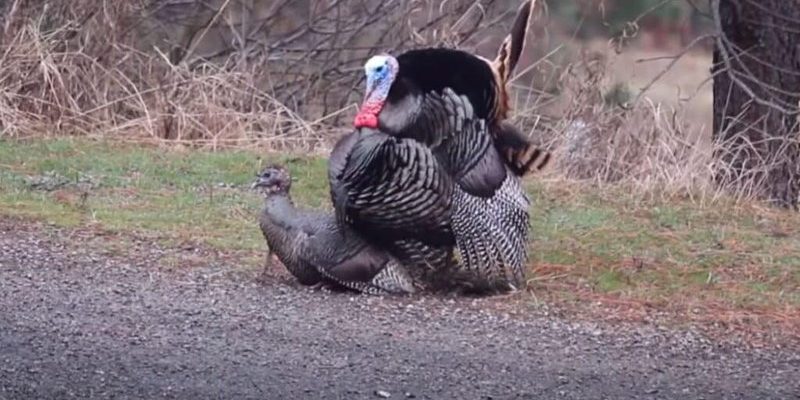
Turkey vultures have a reputation for being scavengers, but their mating rituals are a fascinating blend of instinct and behavior that reveals a great deal about their species. Like a couple preparing for a dance, these birds display their skills and stamina as part of their courtship process. So, grab a cup of coffee, and let’s dive into the world of Turkey Vulture courtship and mating rituals—where the sky is the limit!
Understanding Turkey Vulture Courtship
When Turkey Vultures are ready to mate, they enter a stage of courtship that’s almost like a performance. These birds rely primarily on visual displays and aerial maneuvers to attract their potential mates. The courtship typically takes place in early spring, a time when the weather is just right, and the landscape is alive with new growth.
During this period, a male Turkey Vulture will often engage in impressive flight displays. You might see them soaring high in the sky, performing loops and dives. This aerial ballet serves a dual purpose: it showcases the male’s strength and fitness, and it also helps him attract the attention of females in the area. Isn’t it interesting how nature has these intricate ways of ensuring the survival of the species?
But it’s not all about flying. Ground displays are equally important. Males may puff themselves up, spread their wings, and even engage in a bit of “dancing” on the ground to impress females. This combination of aerial and terrestrial displays ensures that they make a memorable impression.
The Role of Visual Signals in Mating Rituals
Visual signals play a crucial role in the Turkey Vulture’s mating game. You might be wondering how these signals work. Well, it’s all about showcasing those beautiful feathers and body language.
When a Turkey Vulture wants to catch the eye of a prospective mate, it often opens its wings wide—almost like a peacock showing off its tail feathers. This dramatic display emphasizes the bird’s size and condition, which are essential traits for attracting a female. The deeper the color of the plumage, typically a sign of good health, the more appealing it is to potential mates.
Sometimes, vultures engage in head-bobbing or other physical gestures. These actions can signal interest or possibility, much like human flirting. The combined effect of these visual cues can be quite captivating, turning the courtship into a lively dance of colors and movements.
Pair Bonding and Nesting
Once a pair of Turkey Vultures has established a bond through their courtship rituals, they usually stick together for the breeding season. It’s common for these birds to become monogamous for this period, with both the male and female participating in raising their young.
The couple works together to find a suitable nesting site, often choosing caves, hollow trees, or secluded areas where their eggs will be safe from predators. Here’s the thing: Turkey Vultures don’t build traditional nests like many other birds. Instead, they may lay their eggs directly on the ground or in a very shallow depression.
After the female lays one to three eggs, both parents take turns incubating them. This shared responsibility helps to strengthen their bond further, as they rely on each other for the survival of their eggs and soon-to-hatch chicks.
The Importance of Timing
Timing is crucial for Turkey Vultures when it comes to mating and nesting. These birds are often influenced by environmental factors, such as temperature and food availability, which can affect their reproductive cycle.
Generally, Turkey Vultures begin their courtship in late winter to early spring. If the weather warms up sooner, the process may start earlier. You can think of it like a natural synchronizing act; they know when to come together based on external cues. This allows them to hatch their eggs at a time when food is plentiful, ensuring that they can provide for their young.
Once the young vultures are hatched, they require food to thrive. Since Turkey Vultures are scavengers, their success depends on actively finding food in their habitats. This is a critical factor that can influence their mating strategies, as a successful pair must not only mate but also raise their chicks in a suitable environment.
Challenges in Courtship and Mating
While Turkey Vultures have unique courtship and mating behaviors, they face challenges. One major issue is habitat loss. As urbanization spreads, these birds often find it harder to locate safe nesting sites and abundant food sources.
Additionally, climate change poses a risk. Changes in temperature and weather patterns can disrupt their breeding cycle. Imagine trying to sing a song and having the music thrown off—this is similar to how changing environments can affect their natural behaviors and reproductive success.
Predation is another challenge. While adult Turkey Vultures have few natural enemies, their eggs and young chicks are vulnerable. If a nest is discovered, it could be at risk from other animals. The strategy of not building elaborate nests helps, but it doesn’t completely shield them from danger.
Turkey Vultures may not be the first birds that pop into your head when you think of romance in nature, but they have some captivating courtship and mating rituals. From their aerial displays to their unique nest-building approaches, these birds show that there’s more than meets the eye. They embody a beautiful blend of instinctual behavior and adaptations that allow them to thrive.
Understanding the courtship and mating rituals of Turkey Vultures gives us a glimpse into their world. It reminds us of the complexities of nature and the importance of protecting these habitats so these fascinating creatures can continue their dances in the skies. So next time you see a Turkey Vulture soaring above, remember the intricate love story that’s unfolding right above you.

